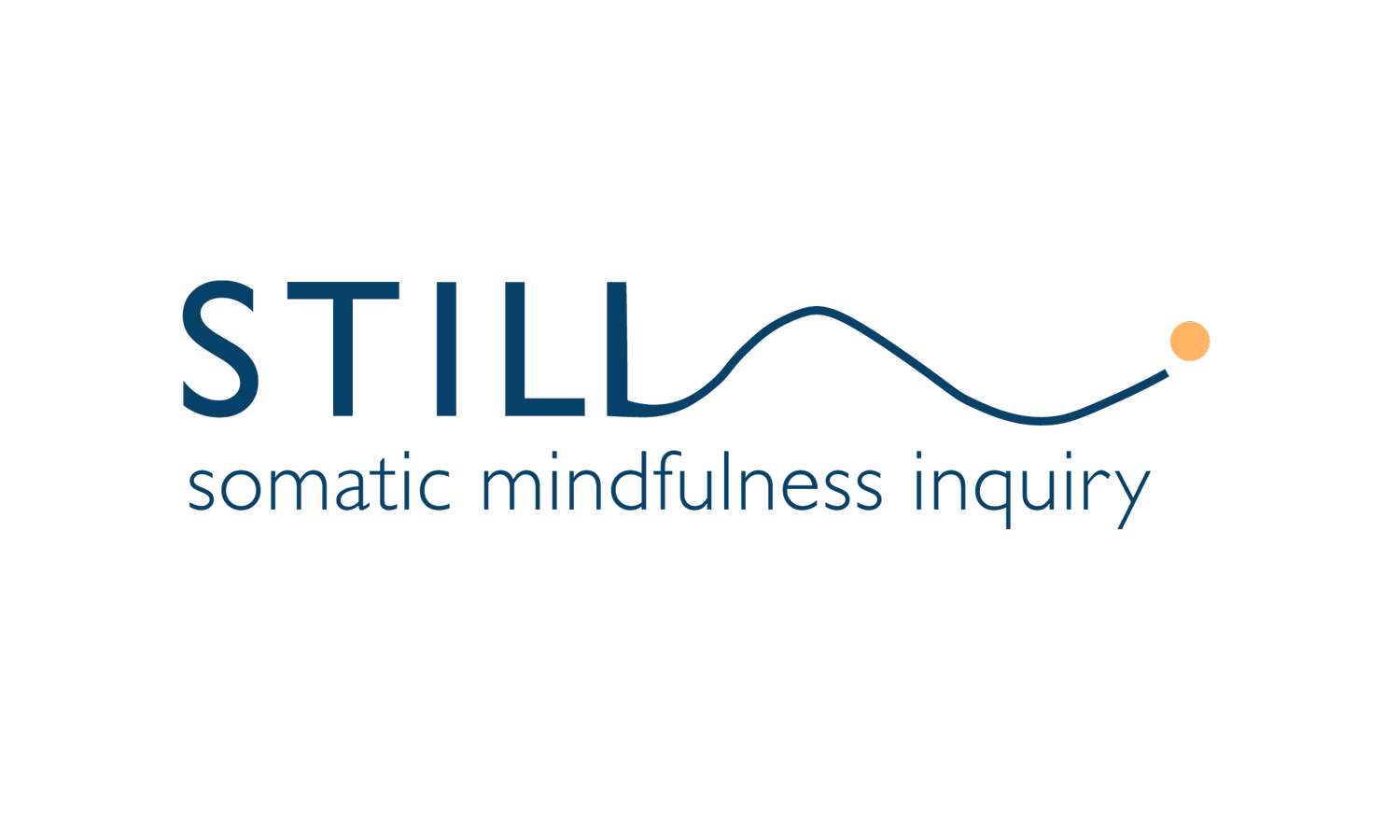Energy of Our Thoughts
Our brain is highly associative and brings forward thoughts and memories related to the sensations in our body.
Our nervous system has an unconscious process of detecting threat, and then activates a survival mechanism of fight/ flight/ freeze to protect us. The brain has a negativity bias and uses data from childhood that is no longer as relevant. We believe our thoughts, and may respond to traumatic memory as if it is present moment danger.
Most troubling thoughts are generated by the nervous system trying to keep us safe.
Hypervigilance interferes with clear seeing and accurate neuroception. Self-regulation reduces the level of vigilance to a more appropriate level, and increases our sense of agency and options.
The main practice of working with witnessing thoughts is to increase the accuracy of our perception of the safety and danger in our present moment situation. We learn about how thought works generally, and our own patterns specifically.
With catastrophic thinking, we avoid being in our body, suppress our feelings, and instead get caught up in anxiety and planning. We hope that if we worry and think of everything that could go wrong, we can protect ourselves from it. It doesn’t work that way.
Ruminating is when we compulsively think about a past incident over and over, looking for a different outcome. We do this to experience some sense of agency.
Two complementary approaches to work with troubling thoughts.
Somatic (body) mindfulness and awareness of thoughts in the present moment so we can intervene before we’re sucked deep into a whirlpool of toxicity or fear.
Go upstream to what is generating the sense of danger → strengthen the nervous system and build resilience to lessen hypervigilance, then the brain won’t generate so many alarming thoughts and sensations.
Three Main Types of Thought
Thoughts can be neutral, negative, or positive. We can learn to witness our thoughts.
Descriptive Observations: My shoulders are up around my ears. I’m holding my breath. My belly softens as I breathe out. The air flowing into my nostrils feels cool.
Assessing and Judging What We Observe: I hate that I walk around with a tight gut all the time and a feeling of doom in the pit of my stomach. Urgh! I’ve just gotten lost in a train of thought. What is the matter with me that I can’t relax and focus? Or a kinder - there I go again - and patiently bring yourself back.
Trains of Thought: Because our brain is highly associative, one thought leads to another then another. We find ourselves thinking about something unrelated to the present moment. We are off in the past or future. Many of these thoughts are driven by hypervigilance in our nervous system and these thoughts tend to be more intrusive.
Mechanics of Thought
Thought comes in as words we can see or hear, and images we can see. The content of our thoughts arises from our pool of associations, memories and experiences.
Memories are images and words associated with sensation in our body. When working with traumatic memory, we need to remember this situation isn’t happening right now. There are several effective tools to help us realize this and stay in the safety of the present moment.
Tap gently on your forehead bringing your attention away from the image and into the sound and sensation of the tapping.
Step back and see yourself in the picture. When we look at something out of our own eyes, it feels more immediate, like it’s happening to us right now. When we see ourselves in the picture, it helps us realize we are looking at an image.
Keep your eyes open. Put the image or words in a frame on a wall on the other side of the room.
Framing and Tracing. Notice the image, the frame, and the empty space outside the frame. Take your eyes around the empty space a few times in one direction then a few times in the other direction. When we look back at the image in the frame, it’s often lost some of its intensity. You can do this a few times on a single image or on a collage.
Focus shifting is also done with eyes open and the image on a wall across the room. Look directly at the image then widen your gaze to include other details on the wall, the color of the paint etc. Shift back and forth between the image and the periphery.
Interrupt the trance with practices like 5 4 3 2 1 senses, holding your own hand, or breathing practices like cyclic physiological sighing. You can find these here under Emergency Practices.
Somatic Inquiry on Thought
Imagine that you are sitting behind your brain watching thoughts as they arise and fall - they are positive, neutral, or negative. Some are descriptive, some judging. Some are in the background and barely catch your attention. Sometimes you get caught in a train of thought.
What is the energy of your thoughts? What is the content? How are they related?
When you notice you are absorbed in a train of thought, bring yourself back to witnessing. If necessary, use the grounding and orienting tools like tapping, tracing, focus shifting, and visual cues of safety to come back to the present moment.
What is the response in your body to different energy and content of thought?
What is the predominant energy and type of thought in your mind these days?
Join us Sundays to explore and inquire together in our free community class. Click here for details.
